What Is Langerhans Cell Histiocytosis?
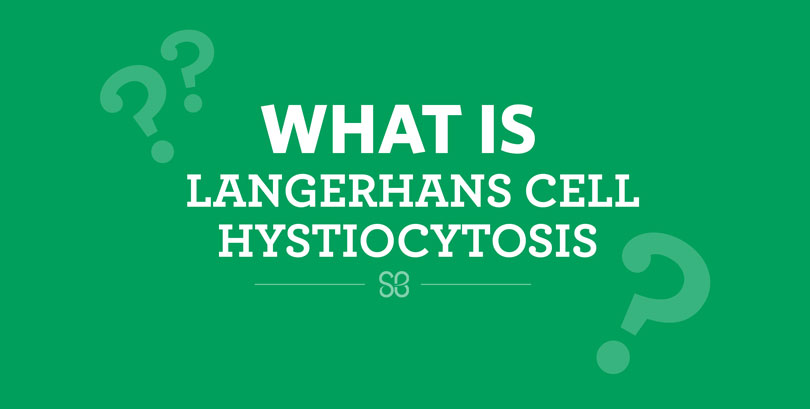
Dr. Carlos Rodriguez-Galindo is a St. Baldrick’s researcher at St. Jude Children’s Research Hospital and a member of the St. Baldrick’s Scientific Advisory Committee. He explains what Langerhans cell histiocytosis is, how it’s diagnosed and treated, and how research is helping kids and adults with this disease.
What is Langerhans cell histiocytosis?
Langerhans cell histiocytosis, often called LCH, is a disorder where the body produces too many Langerhans cells.
A Langerhans cell is a type of white blood cell that normally helps the body fight off infection. In LCH, the body produces too many of these cells. The cells build up in the body, sometimes damaging organs or forming tumors.
What Is Proton Therapy?

Dr. Ralph Ermoian is a radiation oncologist and St. Baldrick’s infrastructure grant recipient at the University of Washington. He explains what proton therapy is, how it works, and how this treatment is helping kids and adults with cancer.
What is proton therapy?
Proton therapy is a type of radiation used commonly for children with cancer. Like traditional x-ray radiation, it is used to treat cancers, but proton therapy affects less of the healthy tissue surrounding the tumor.
The Fight’s Never Over: The Two Biggest Threats Facing Childhood Cancer Survivors
Surviving childhood cancer isn’t the end of the fight. As survivors age, heart disease and secondary cancers become two big risks, often caused by the very treatment needed to save their lives. Read on to learn more about the two main threats to survivors and how St. Baldrick’s researchers are working to help.

Since surviving a brain tumor as a child, Ambassador Grace has dealt with long-term effects from her treatment.
After beating childhood cancer, survivors should be living long and healthy lives, but that isn’t always the case.
10 Facts About St. Baldrick’s
You know St. Baldrick’s — but did you know these 10 fun facts about us?
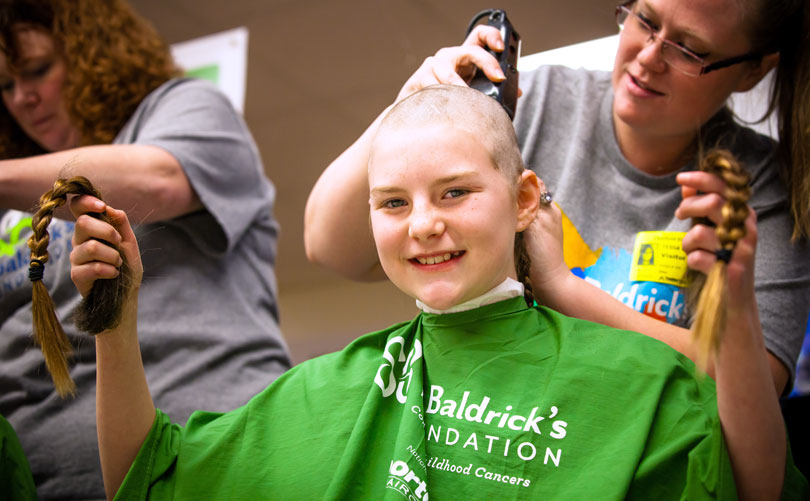
1. St. Baldrick isn’t a real guy.
If he isn’t real, then where did the name come from? St. Baldrick is a mashup of St. Patrick’s Day and the word “bald” — two things which sum up the humble beginnings of the St. Baldrick’s Foundation.
Winter 2016 Impact Report: See How Your Support Is Helping Kids With Cancer
We’re all about funding lifesaving childhood cancer research. And thanks to your support, progress is being made! Take a look at some of the exciting research happening right now.
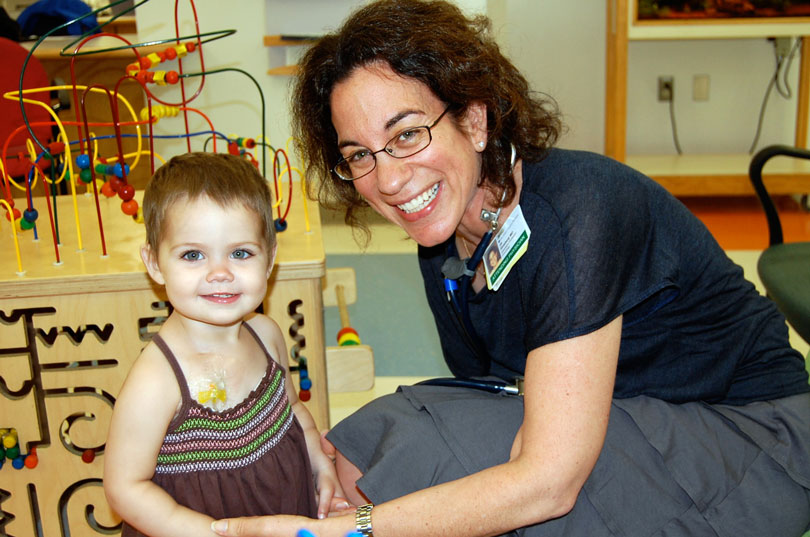
Dr. Jill Ginsberg, a St. Baldrick’s researcher at the Children’s Hospital of Philadelphia, with a patient.
Immunotherapy for medulloblastoma
St. Baldrick’s researchers are at the forefront of an entirely new kind of treatment. The concept is simple: Put the immune system to work, fighting off cancer just like it fights off the common cold. This is called immunotherapy.
By using the immune system to kill only cancer cells without damaging the healthy cells around them, there will be less long-term damage to young bodies.
Pediatric Cancer Research Facts: A Decade of Successes [INFOGRAPHIC]
Kids are special, and childhood cancers are different than adult cancers. That’s why we’re funding research to find new therapies and cures just for kids.
We asked our researchers, “In the last 10 years, what’s been the greatest achievement in the field of pediatric cancer research?”
Here’s what they had to say.
What Are Nanoparticles?
St. Baldrick’s researcher Dr. Brodeur knows that tiny things can have a big impact on cancer. He studies nanoparticles and how they can be used to deliver cancer-fighting drugs to tumors, without hurting healthy cells. Read on to learn more.
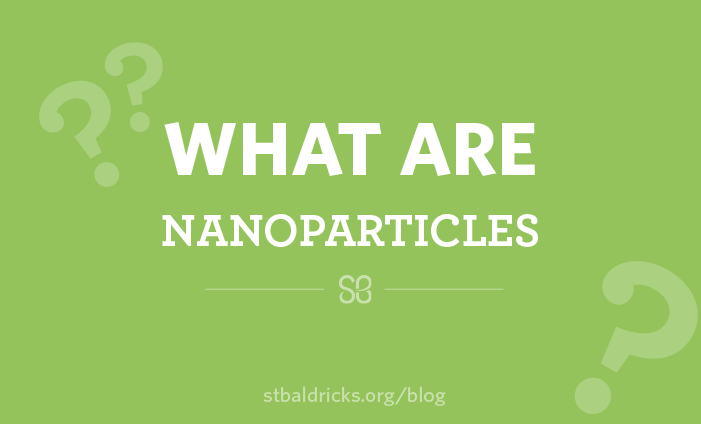
Good things can come in small packages — really, really small packages.
Nanoparticles are teeny, tiny particles. How tiny? You could fit about one million nanoparticles in the period on the end of this sentence. St. Baldrick’s researcher Dr. Garrett Brodeur is studying how these tiny lab-created particles can be used to help kids with cancer.
The History of Childhood Cancer Research
In honor of Childhood Cancer Awareness Month, we are looking back through the decades at the milestones in research that have brought us to where we are today, and we are looking to the future — made brighter for kids with cancer because of you!
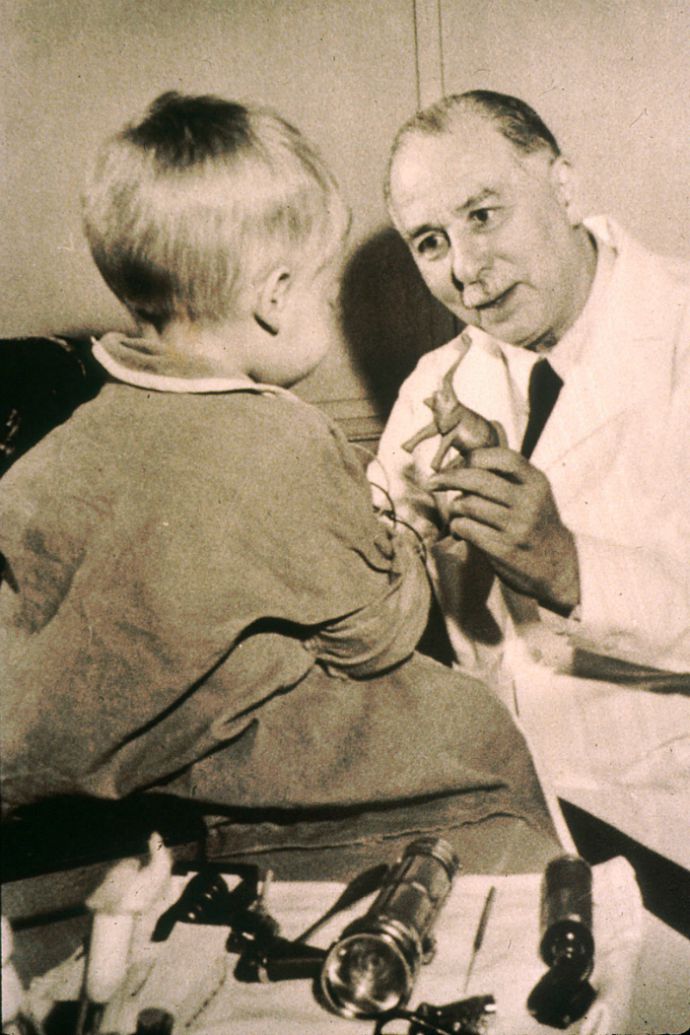
Dr. Sidney Farber examines a young patient. Photo from the National Institutes of Health
The childhood cancer research world we know today owes itself to the progress of the 1950s and 1960s.
It was a time “when people really began to believe that you could take a swipe at cancer,” said Dr. Crystal Mackall of the National Cancer Institute. Dr. Mackall is co-chair of the Stand Up to Cancer – St. Baldrick’s Pediatric Cancer Dream Team*, which is working to develop new, targeted therapies for kids with difficult-to-treat cancers.
Babies and Cancer [Q&A]
Anyone can get cancer — even babies. Dr. Erin Breese, a St. Baldrick’s Fellow studying infant leukemia, explains the signs, symptoms and treatment of babies with cancer, and how research is helping pinpoint better therapies so babies with cancer can grow up to live long, healthy lives.
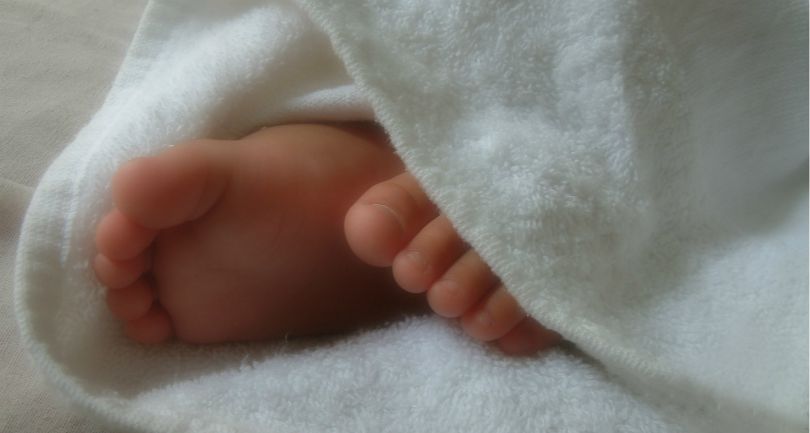
Can babies get cancer?
Unfortunately, cancer can occur at any age including during infancy. According to recent statistics, roughly 23 of every 100,000 babies are diagnosed with cancer each year.
What Is Non-Hodgkin Lymphoma?

Dr. Matthew Barth is a St. Baldrick’s Scholar at the University of Buffalo in Buffalo, New York. He is studying ways to help kids with non-Hodgkin lymphoma who don’t respond to treatment.
What is non-Hodgkin lymphoma?
Non-Hodgkin lymphoma is a cancer of white blood cells called lymphocytes. Non-Hodgkin lymphoma generally involves the lymph nodes, but can also involve many other organs, including the bones, bone marrow, liver, spleen, brain and skin.
There are many types of non-Hodgkin lymphoma. Children tend to have more aggressive forms of the disease, while adults frequently have less aggressive forms. Non-Hodgkin lymphoma is very rare in children younger than 3 years old and is seen more often in adolescents.
« Newer PostsOlder Posts »

 SBF
Tweets »
SBF
Tweets »